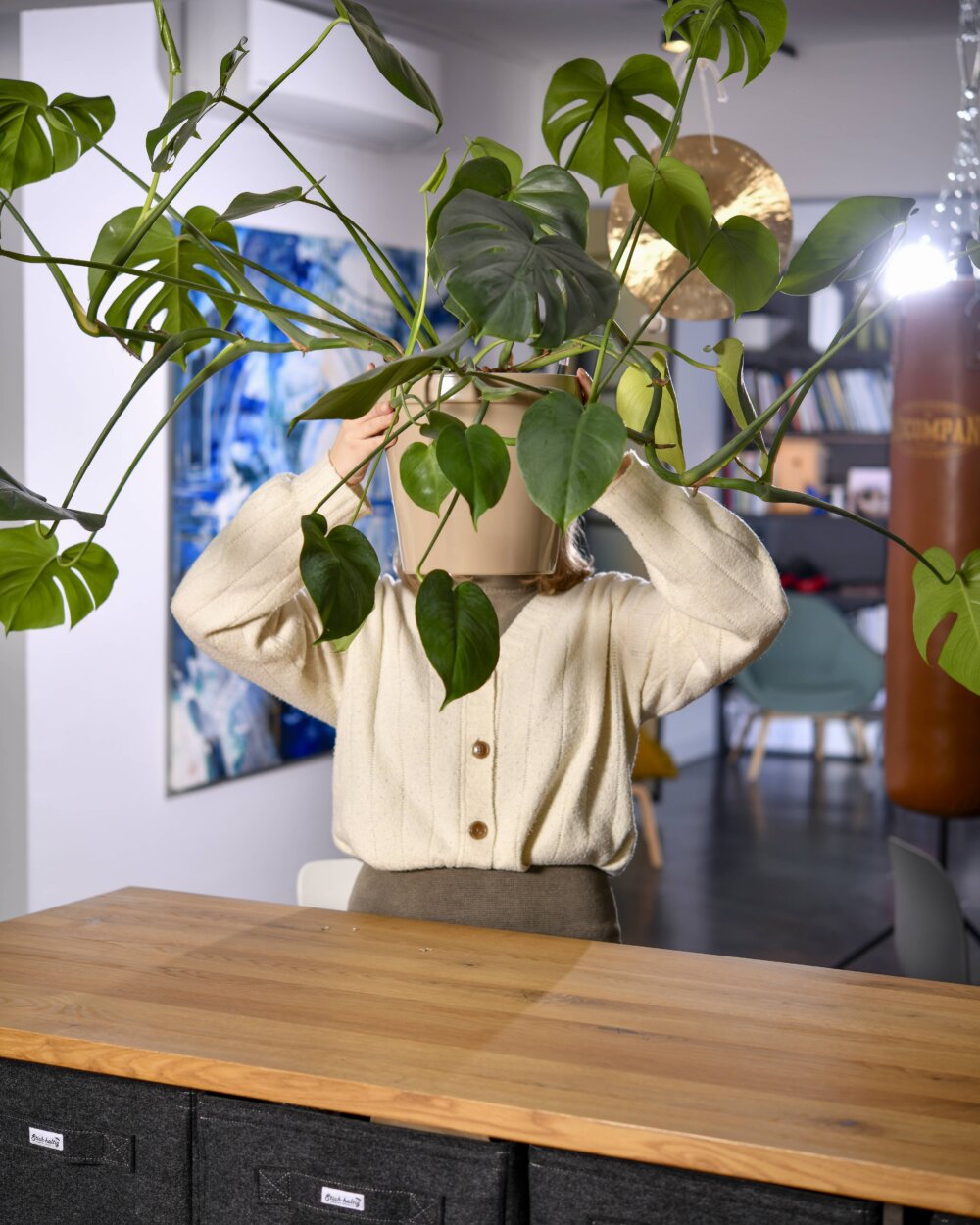The office kitchen as a place of encounter: Community in the modern workplace
An office kitchen is a kitchen within an office space. A place where meals and drinks are prepared and consumed. This simple explanation of a communal area is certainly not incorrect. However, we believe: this community space is much more! Above all, it is a central meeting point that can strengthen cohesion in the office. And not infrequently, it is also used for casual and informal meetings. But how exactly does community arise, and what does it take to come together?
Office kitchen, community area, team lounge, and so on — wording also plays an important role, and thus various terms are used. When choosing the term, the question arises: What is the focus, and what fits into our company's linguistic culture? As diverse as corporate cultures are, so too is the finding of an appropriate description for an office kitchen.
In our blog post, we take a look at the heart of every office: the office kitchen. It is much more than just a space for daily lunches. As a central meeting point in the office, it strengthens cohesion, promotes informal meetings and is simultaneously a breeding ground for ideas. However, where there's activity, there are also challenges. The use of communal space also poses challenges, such as maintaining cleanliness and order, as well as equipment maintenance. A collectively developed kitchen etiquette for hygiene and mutual consideration, as well as the active involvement of employees in shaping the space, can positively influence well-being and productivity in the community area.
The office kitchen: Heart of interpersonal exchange
The team lounge is not just a place where food is prepared and consumed. It is rather a social meeting point where colleagues from different departments and hierarchical levels can encounter each other, engage in conversation and exchange ideas. Here are some reasons why the communal area, as the heart of the company, contributes to a productive and positive work environment:
- Fostering informal exchange: The communal area provides employees with the opportunity to engage in conversation in a relaxed and informal atmosphere. Here, they can get to know each other, discuss work or personal interests, and informally network. These encounters support idea exchange and teamwork, often leading to new impulses and exciting ideas that can result in innovative solutions.
- Creating an open and inclusive work environment: The team lounge can serve as a meeting place and break down barriers between departments or hierarchical levels. By establishing a common space where all employees feel equally welcome, an open and inclusive work environment is promoted. Here, all employees have the opportunity to meet on equal footing and learn from each other.
- Strengthening team spirit: The communal area can foster team spirit and a sense of belonging. Here, conversations and memories can be created that go beyond work tasks. This sense of unity can have a positive effect on the work atmosphere and strengthen employee engagement.
- Fostering creative ideas: The office kitchen can be a place of creativity and innovation — away from the desk. Through the exchange of ideas and perspectives, new ways of thinking and solutions can emerge. When employees are given a space outside their usual work environment where they can freely express themselves, creativity is stimulated, and innovation is strengthened.
- Attracting new talents: A modern lounge area can also have a significant impact on the recruitment process. Potential employees often prefer companies that not only offer attractive working conditions but also have an appealing work environment. A well-designed and inviting lounge area signals appreciation for employees and can encourage potential applicants to choose the company.
- Customer interaction with style: The team lounge not only serves an important function for internal processes and employee satisfaction but can also leave a positive impression on external visitors such as customers. An inviting and well-equipped dining area signals professionalism and appreciation for guests. Here, informal conversations can be held in a pleasant atmosphere, and business relationships can be strengthened. A well-maintained kitchen area also contributes to improving the company's image and impressing clients with a modern office.
It's all about "how": Utilizing the communal area
Not every room with a microwave, kettle or coffee machine is automatically an office kitchen. It takes a bit more than that. While a tea kitchen usually consists of a small kitchenette, a community area should be more generously equipped. Tea kitchens are located in individual departments or floors. They primarily serve to take a short break from work with a cup of tea or coffee. Since tea kitchens are limited to specific departments, they often provide opportunities for informal conversations within the team.
A trend that has become increasingly popular in recent years is the establishment of a work café in the company. A work café combines the functions of the communal area with a flexible workspace. Here, employees can not only eat and drink but also work in a creative environment. Various seating options, from comfortable sofas to height-adjustable tables, support different work styles and preferences. The work café creates an informal atmosphere where employees can meet, collaborate and exchange ideas.
Feeling comfortable together: Order and cleanliness in the tea kitchen
Ideally, the office kitchen should be a place where employees can meet and exchange ideas, leaving the creative boundaries of their own "bubble" to develop fresh ideas. However, the communal area also poses potential conflicts: disorder at the sink, forgotten food in the refrigerator and stains on the work surface can quickly become points of contention.
Here, a clear kitchen etiquette helps regulate hygiene, cleanliness and general well-being, thus creating a safe and inviting space for everyone. By collectively developing and documenting guidelines for cleanliness, catering and mutual consideration, harmonious interaction can be promoted. Not to be overlooked is the maintenance of kitchen appliances, which is crucial for their longevity and the avoidance of downtime.
The design of the office kitchen requires corporate culture
Functionality plays a crucial role in the design of the kitchen area. Functionality means having enough space for food preparation, sufficient storage space for kitchen utensils and adequate refrigeration options. High-quality appliances such as a good coffee machine or dishwasher also contribute to making kitchen use pleasant and efficient.
The team lounge, as a central meeting point, not only reflects but can also influence corporate culture. Therefore, the social component should not be overlooked. A large table where employees can come together and eat together promotes community and communication. Pleasant lighting, appealing colours and perhaps even a few plants contribute to creating an inviting atmosphere.
Every aspect of the team lounge design contributes to general well-being, which in turn can affect culture. Whether it's the CEO's office, meeting rooms or community area — if office design is in line with the values a company wants to promote, it can help strengthen those values. Moreover, implementation has a significant impact on the well-being and satisfaction of employees, thus positively influencing the productivity of the company.
Everyone has a voice: How employees shape the modern workplace
It is important to involve employees in the design of office spaces. Changes are best lived when communicated early and when all stakeholders are on board. Companies should take the needs and desires of their employees seriously and involve them in shaping the entire work environment. Transparency, openness and the opportunity for participation are crucial factors in creating a positive corporate culture in which employees feel valued.
Corporate culture becomes tangible in the office kitchen
A community area tailored to the needs of employees is more than just a place for a quick meal. It is the heart of a modern office, where employees meet, exchange ideas and make contacts. Thanks to thoughtful design reflecting corporate values, the communal area becomes a hotspot for spontaneous conversations and creative brainstorming sessions. This not only lifts team spirits but also leaves an impression on potential new hires and visitors. Thus, the team lounge remains an essential part of a new working world that promotes flexibility and a pleasant atmosphere for successful collaboration.


